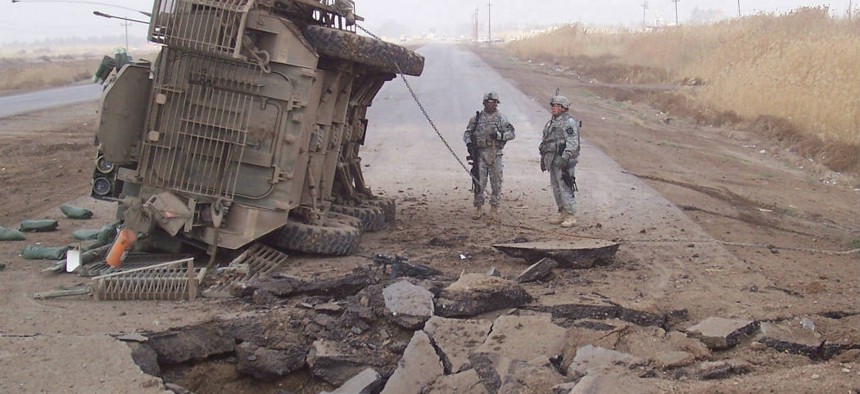A high-tech solution for spotting IEDs
Researchers are building an augmented reality system that combines traditional cameras, thermal infrared sensing and ground penetrating radar to find improvised explosive devices from up to 30 meters away.
Improvised explosive devices are among the deadliest weapons in modern warfare. More than 3,000 individuals were killed or injured by IEDs in just three months in Afghanistan last year, according to Foreign Policy.
The homemade bombs are created using various commodity wireless electronic components like phones, radios or doorbells. To combat them, the Pentagon has investigated jammers, ultra-wideband radar, ground penetrating radar, aerostat-mounted sensors, LiDAR and of course, trained dogs.
In one of the latest attempts to protect the military from IEDs, researchers at the University of Delaware are working with the Army Research Lab to build an augmented reality system that combines traditional cameras, thermal infrared sensing and ground penetrating radar to find and classify potentially dangerous objects from up to 30 meters away.
Regular cameras collect visible light, while heat-detecting infrared can be used at night and in foggy conditions and dust storms. The system's radar uses radio waves to probe the surrounding environment, spotting objects buried up to three to five inches. The information would populate an augmented reality system.
The multi-camera system could be deployed on autonomous vehicles, drones or robots before troops are sent into an area. The complementing technologies will help ensure that an IED missed by one scan could be picked up by another.
With the data collected by the cameras, the researchers are training an algorithm to make identifying IEDs and other targets more effective.
NEXT STORY: ARCYBER's Nakasone to head NSA and CyberCommand





